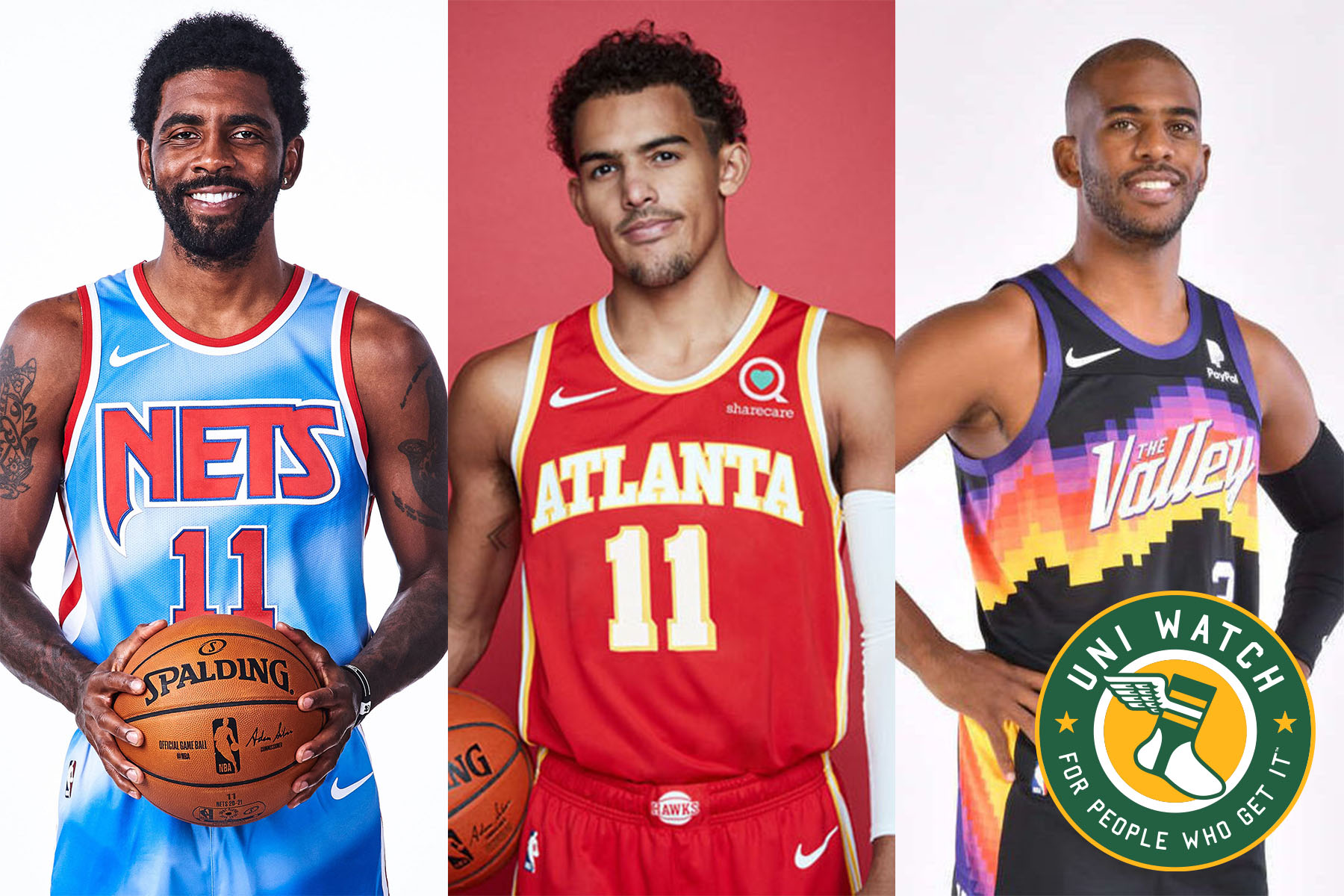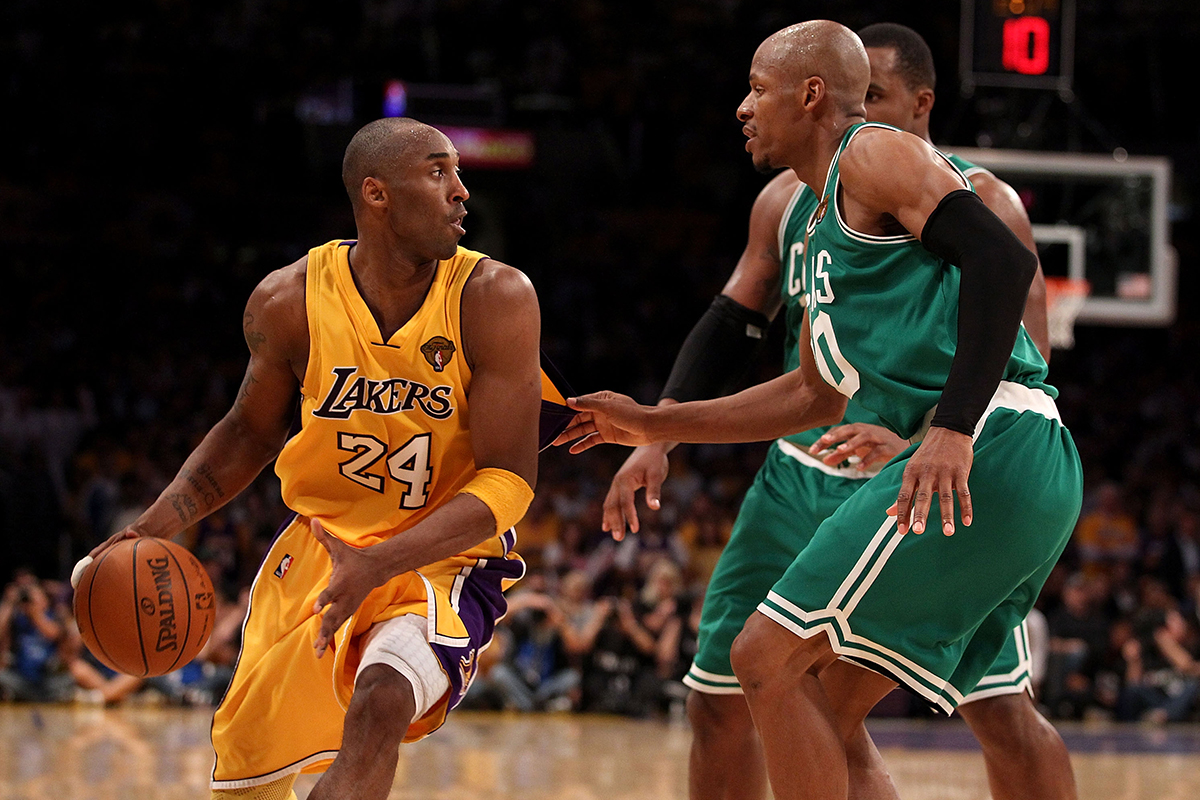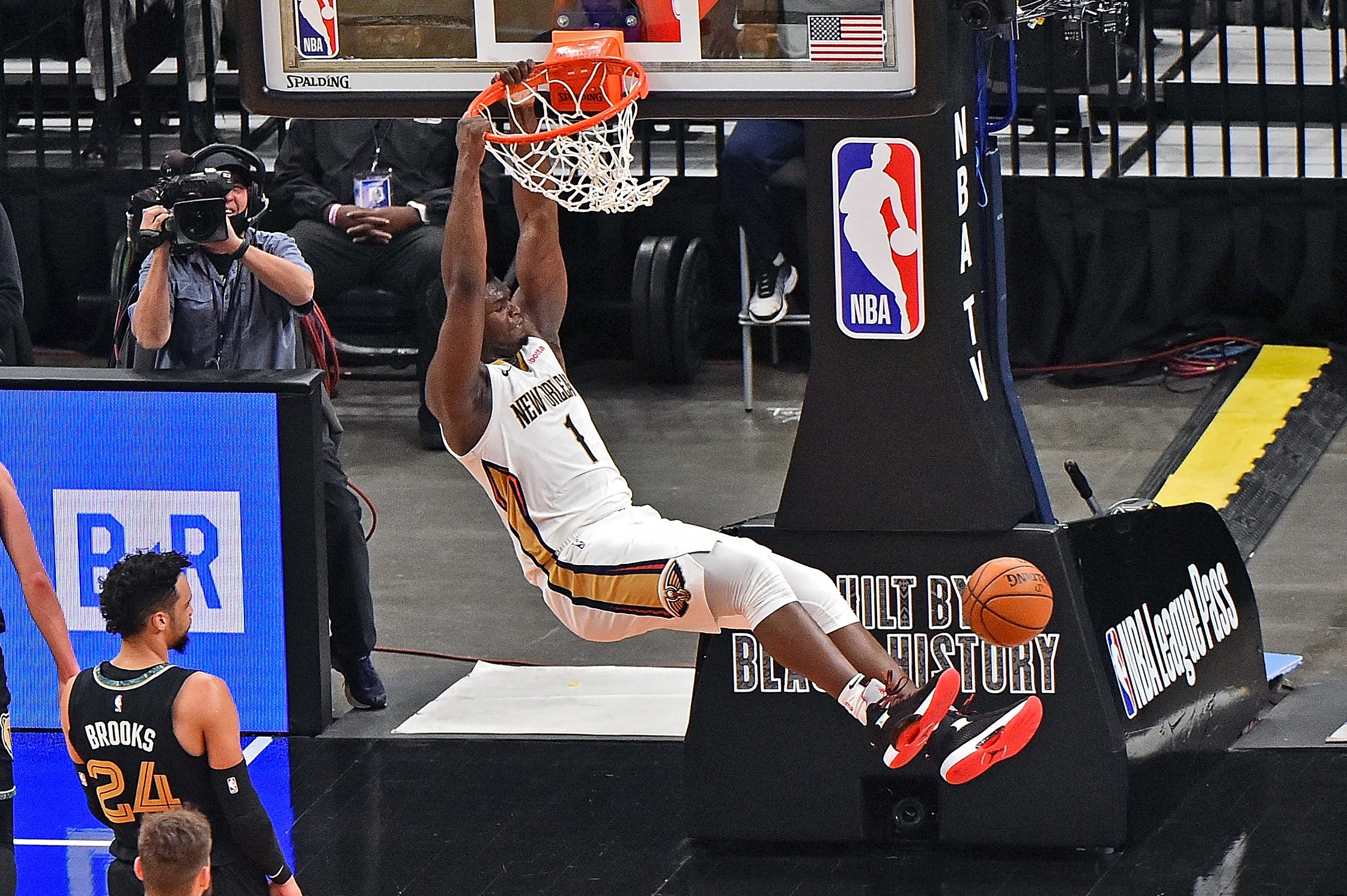The contemporary artist Daniel Arsham has an impressive résumé. His work has been exhibited around the world and is prized by collectors. He’s designed dance sets for the choreographer Merce Cunningham, collaborated with upscale brands like Porsche and Dior, and partnered with Adidas to make a series of short films. His Snarkitecture practice has designed retail spaces for lifestyle imprints like Kith, Valextra and Stampd. He has nearly a million Instagram followers.
But Arsham recently added a new line to his CV that’s unusual, even for him: Last November he became the creative director for the NBA’s Cleveland Cavaliers.
“I’ve always loved basketball, but the idea of a role like this never occurred to me because it seemed to be so far outside the realm of possibility,” Arsham tells InsideHook. “But once we started talking about it, it made sense.”
Arsham’s portfolio with the Cavs will include everything public-facing that doesn’t have to do with basketball operations. Uniforms, logos, marketing, branding, advertising, social media — all of that and more will come under his gaze. “Obviously, we work with various agencies, and we have our own really good in-house creative team, but we have not had a true creative director before,” says Cavs executive vice president Tad Carper. “And certainly nobody the likes of Daniel.”
The Cavaliers hiring Arsham is arguably the most intriguing development in a slow but steady trend of NBA teams expanding their cultural footprints by aligning themselves with figures from the worlds of art, music and fashion over the past eight years. Here are some other examples of that phenomenon:
- In 2013, the Toronto Raptors named the Toronto-based rapper Drake as their “global ambassador.” Among other things, he’s had input on the team’s logos and uniforms.
- The Brooklyn Nets have worn uniforms inspired by the late rapper Biggie Smalls and the late artist Jean-Michel Basquiat.
- The Dallas Mavericks and Los Angeles Clippers have both worn uniforms designed by local graffiti artists.
- The New York Knicks turned to streetwear designer and Kith brand founder Ronnie Fieg (who has collaborated with Arsham on several projects) to design one of their uniforms for this season.
- About a month after the Cavaliers hired Arsham, the Detroit Pistons announced that they had retained rapper Big Sean as their new “creative director of innovation.”
The common thread running through all of these partnerships is that the cultural figures have a local connection to the teams’ home markets. That includes Arsham, who was born in Cleveland as a fourth-generation native of the city. Although he grew up mostly in Miami and is now based in New York, he’s maintained ties to Cleveland and to the Cavaliers. In 2019, he created an artwork called Moving Basketball that was exhibited at the team’s arena (one of many basketball-related pieces he’s done over the years), and Cavs owner Dan Gilbert is an Arsham fan with a growing collection of the artist’s work. All of which made Arsham’s new role with the team feel like an organic fit, not a cynical marketing ploy.

“The fact that Cleveland is in him, so he has that depth of perspective and understanding about us, is a critical element of this,” says Carper. “Clevelanders have a tremendous amount of pride, and I think that local connection provides that authenticity. Our fans see him as an extension of us.”
The most visible component of that extension will likely be the team’s logos and uniforms, something Arsham’s long been interested in. “I remember drawing Cavs logos, Bulls logos — I mean, all the teams, really — when I was a teenager in the ’90s,” he says. “I definitely had a very clear picture of the NBA’s design language in the ’80s and ’90s. I think for a lot of people my age, it really did inform the way we think about graphic design.”
NBA uniforms are typically designed about two years in advance, so it’ll be a while before Cavs fans get to see Arsham’s vision on the court. (The only hint he would give about what he might have in store is that he tends to favor classic looks over more outlandish designs.) But he’s already working on other aspects of the team’s visual brand.
“We’re making some pretty drastic alterations in the next two seasons, but I don’t want to create anything that’s going to feel totally unfamiliar to our fan base,” he says. “So I’m spending a lot of time looking back at the lineage of how we arrived at where we are now. When people see some of the things we’ve planned, they’re going to feel like they’ve already seen it, because it will have a sort of vintage character to it, a familiarity. But it’s a completely new design language.”
A similar situation is unfolding in Detroit, where the Pistons are working with Big Sean. “What we were looking to do is reimagine and reposition the brand,” says Mike Zavodsky, the team’s chief business officer. “As we look to be progressive and innovative, and as we also spotlight the continued rise of the city of Detroit and all the things the city has going for it, we felt that Big Sean was a great person to help elevate that platform. He’s from the city and was a fan of the team growing up.”

Big Sean’s “Don Life” logo has already been added to the Pistons’ practice jerseys, and he will also have input on the team’s uniforms (again, with a two-year lag). In addition, the Pistons recently launched a Detroit-centric apparel brand called 313 — the name refers to the city’s area code — and plan to involve the rapper in that venture as well.
Big Sean has some NBA bona fides. He was chosen to appear in an Adidas commercial featuring Chicago Bulls star Derrick Rose in 2011 and previously designed his own “Detroit Player” Adidas sneaker. He also has a Detroit-based charitable foundation, which boosts his credibility with the Pistons’ fan base and provides the same local, community-based connection that is evident throughout so many of these new-era partnerships.
“We’ve been looking to really lean into people who are authentic and connected to the city,” says Tyrel Kirkham, the team’s vice president of brand and marketing strategy. “We don’t want to do anything that feels forced, and Sean just felt like a natural integration into what we wanted to do.”
Cultural figures like Arsham and Big Sean are a long way from the square corporate suits who’ve long dominated sports marketing, but they may represent where the industry is heading, especially as teams and leagues increasingly view themselves as full-fledged global lifestyle brands, not just sports enterprises.
“Our brand really is bigger than basketball, and it’s bigger than sport,” says Carper, the Cavs exec. “We want to be at the intersection of lifestyle, culture, sport, fashion, music, food — all of those things that fit into that equation. When you look at it that way, our potential to reach fans expands beyond wins and losses.”
That’s not just some boardroom-bred platitude. Think about it: When you go to a sporting event these days (or when you were able to, before the pandemic), how many people are actually, you know, watching the game, and how many are there to see and be seen, to hang out at the bar, to shop? How many people wearing a team’s cap or T-shirt actually know the team’s current win-loss record or the players’ stats, and how many just think the team’s brand is a cool thing to wear — especially for the increasing number of NBA fans outside of North America?
Reaching those people is a big part of how Arsham envisions his role. “A lot of people looking at basketball overseas, they don’t really follow the games or the season — they’re more interested in the idea of this American sport,” he says. “So you could see a kid walking around in Tokyo wearing, say, a Lakers jersey, and they don’t know anyone who’s on the team and [have] probably never even watched a game. That’s the kind of interesting universe that I’m trying to push toward.”
So is this type of position, filled by people like Arhsam and Big Sean, going to become more the rule than the exception, at least in the NBA? Arsham thinks so.
“It’s going to become more apparent to teams that they actually need somebody who’s looking at the vision of the team beyond basketball,” he says. Does that mean your favorite team’s next uniform may be designed by a musician, artist, actor, influencer or celebrity chef? Stay tuned.
This article was featured in the InsideHook newsletter. Sign up now.





















